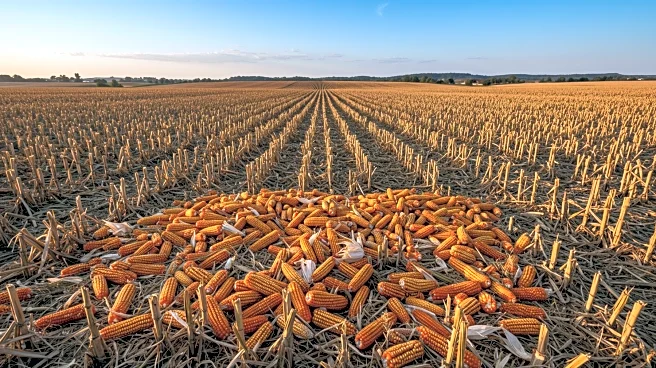What's Happening?
The U.S. Department of Agriculture projects a record-setting corn crop this fall, presenting farmers with the opportunity to manage the substantial residue to reduce fertilizer costs for 2026. Johnathan Lock, a Meristem Crop Performance dealer, highlights the potential for high yields in Illinois, with some fields expected to produce over 300 bushels per acre. The residue from these crops contains valuable nutrients, offering a chance to offset rising fertilizer prices. Meristem's Excavator AMS powered by Cyclestrike is being used to break down corn residue, releasing nutrients for subsequent soybean crops. This approach has shown positive results in early soybean planting and reduced fertilizer expenses.
Why It's Important?
Managing corn residue effectively can significantly impact farmers' bottom lines by reducing reliance on synthetic fertilizers. As fertilizer prices continue to rise, utilizing residue as a nutrient source becomes increasingly attractive. This strategy not only supports sustainable farming practices but also enhances soil health and crop yields. The development of products like Excavator AMS reflects a shift towards innovative agricultural solutions that optimize resource use and improve economic outcomes for farmers. The broader implications include potential changes in fertilizer market dynamics and increased adoption of biological solutions in agriculture.
What's Next?
Farmers are encouraged to reassess their fertilizer strategies for the upcoming crop year, considering the benefits of residue management. Continued research and development in microbial blends and biological solutions will likely drive further advancements in sustainable agriculture practices. As corn yields increase, effective residue management will become a critical component of farming operations, influencing planting schedules and crop rotations. Stakeholders will be monitoring the impact of these practices on overall farm productivity and profitability.













